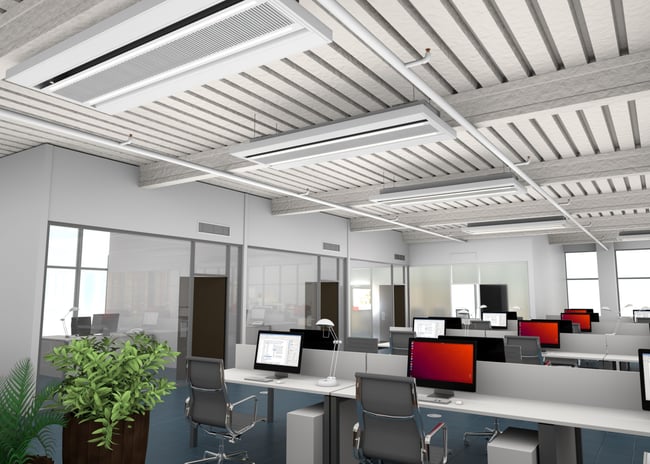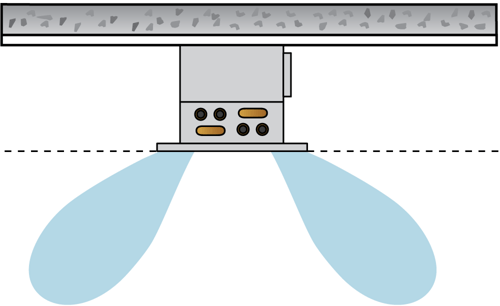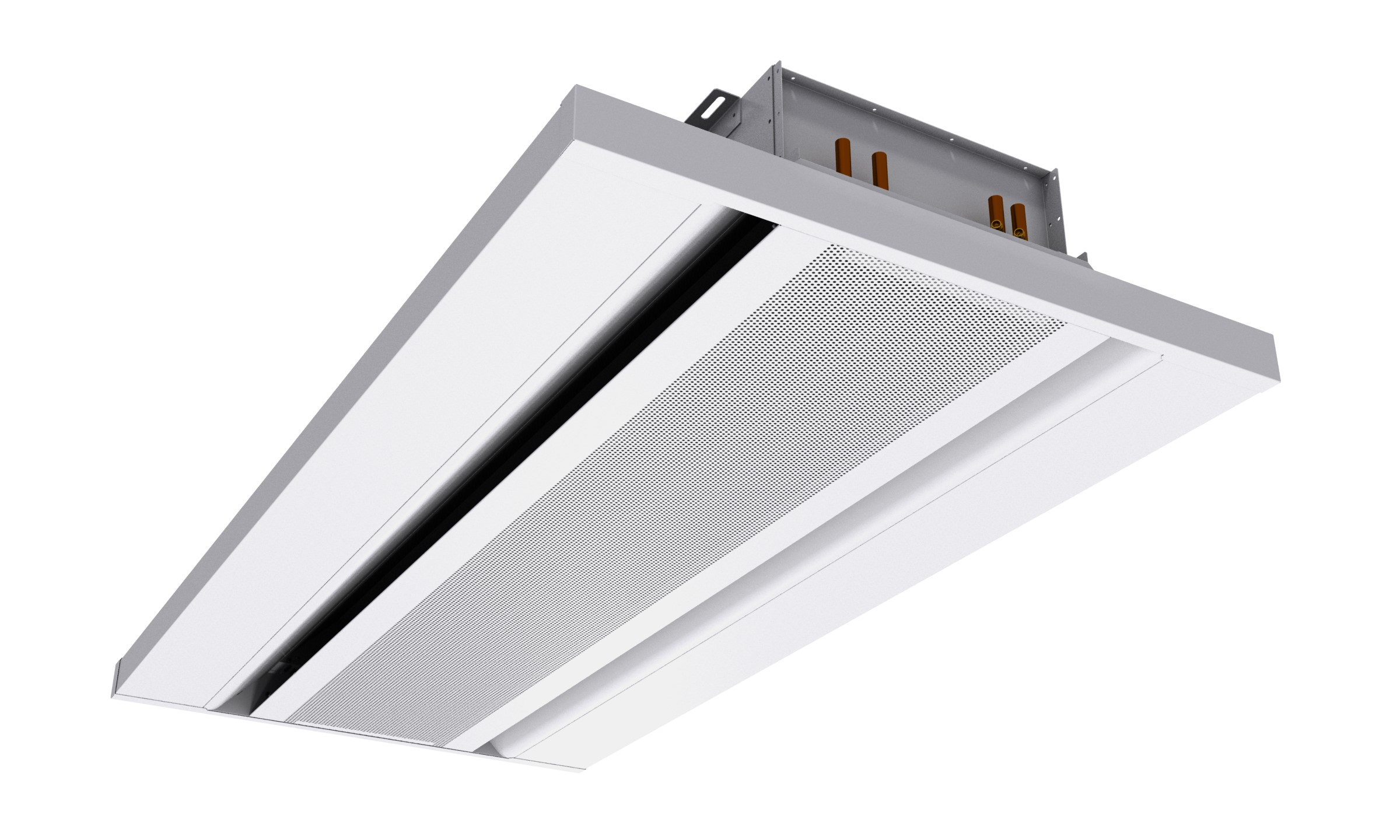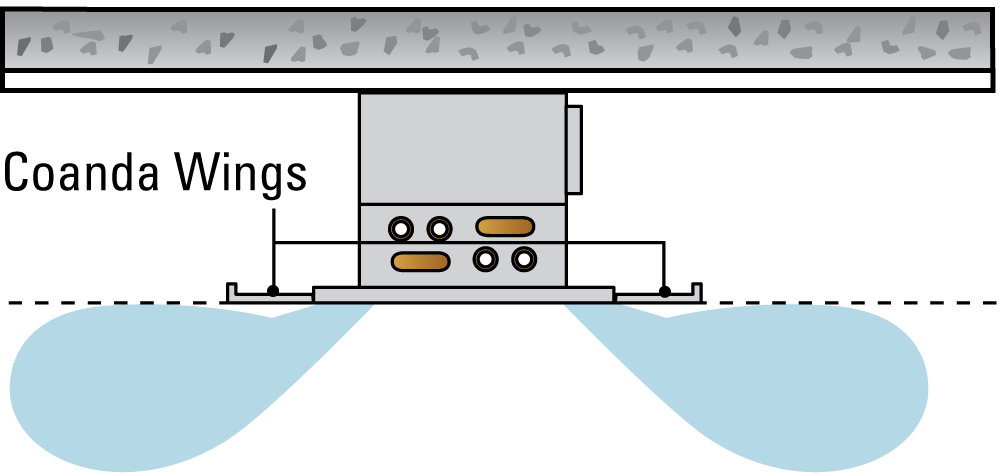Active Chilled Beams and the Coanda Effect
Open-ceiling spaces are becoming increasingly popular, especially in the architectural industry. Aside from providing a feeling of spaciousness and a contemporary aesthetic, the absence of a ceiling grid or drywall also simplifies coordination and allows for more flexibility with ceiling fixtures. But can chilled beams be used in these open-ceiling spaces? As is the case with other air diffuser products, the answer is yes – but with one simple addition.
 |
| Price’s Active Chilled Beam with LED lighting installed in the open ceiling of an office |
When diffusers are installed in a traditional lay-in ceiling, the ceiling itself facilitates the Coanda effect, a phenomenon where the airstream attaches itself to the surface, travels across the ceiling and naturally falls into the occupied zone after its velocity has decreased. Without a ceiling, however, the air has nothing to cling to and will dump into the space. This can create drafts, especially in low-height spaces.
 |
| An active chilled beam installed in an open ceiling, showing no Coanda effect at the dotted line where the ceiling would be |
In order to attain the Coanda effect and avoid drafts in open-ceiling applications, active chilled beams should be installed with Coanda wings. These Coanda wings are 6-inch plates added to each side of the chilled beam that provide that surface needed for the Coanda effect to be maintained. The airstream can make its way across the ceiling and fall into the space while keeping drafts to a minimum.
 |
 |
| An active chilled beam with Coanda wings (left), which maintains the Coanda effect and prevents drafts (right) | |
Coanda wings are recommended for any open-ceiling application, but it is also important to consider the installation height of the chilled beam. The recommended height from the beam’s face to the floor is at most 15 feet, with 8–12 feet being ideal. At taller heights, the Coanda wings may need to be removed, especially if the chilled beams are used in heating mode. This is because the warm air temperatures may stratify with the Coanda wings, so a more downward angle will help direct the air toward the lower portion of the space while heating in tall areas.
While the above discussion focuses on active chilled beams, passive chilled beams can be used in open-ceiling spaces as well. With passive beams, however, Coanda wings are not necessary. Air through the passive beam is not forced as it is in an active beam, so the velocity is not high enough for the Coanda effect to take place. In fact, passive beams’ reliance on natural convection for air distribution makes them well suited for open-ceiling applications where only cooling is required.
For more information about how you can use chilled beams in your next open-ceiling project, visit our website or contact us at sustainable@priceindustries.com.



